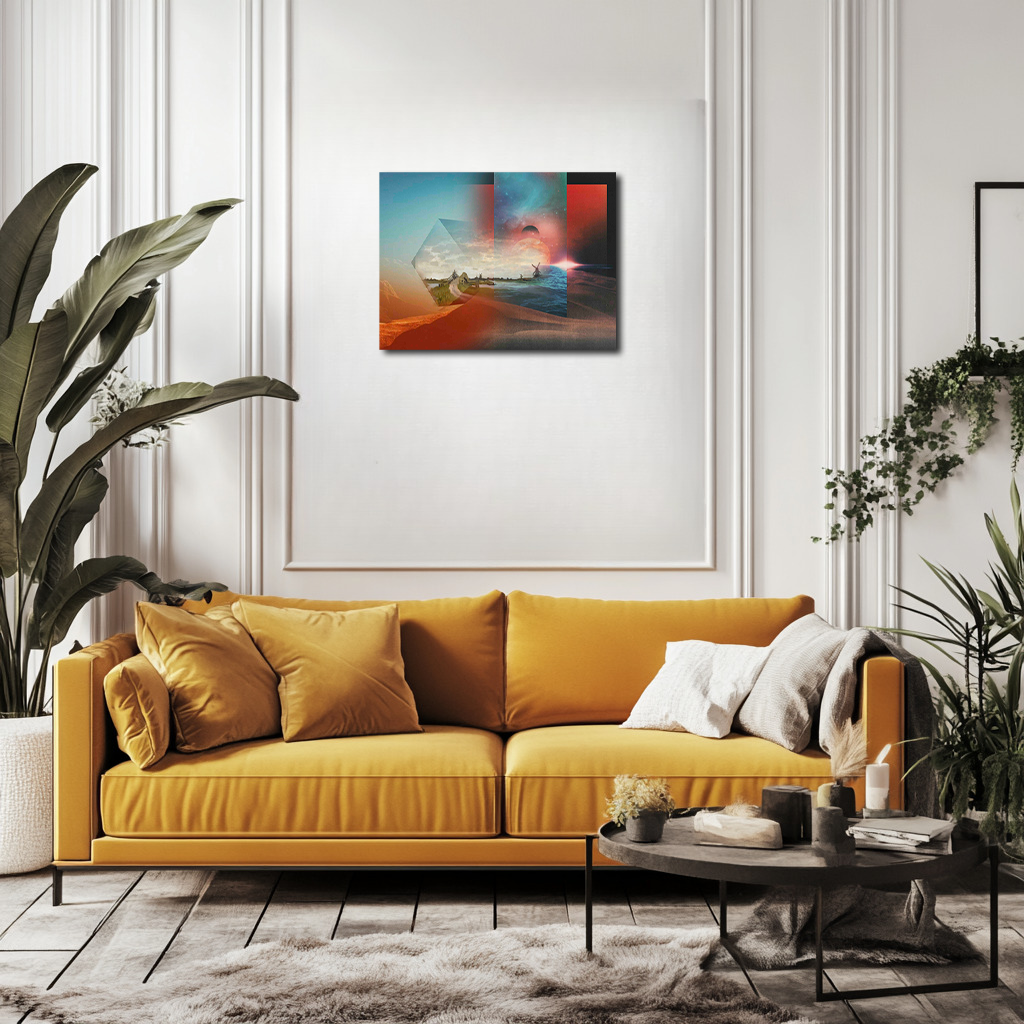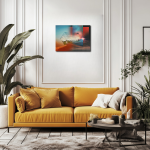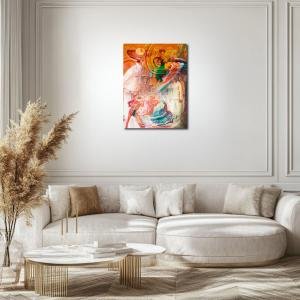Fractured Horizons: The Windmills of Haaldersbroek Beyond Time
"Fractured Horizons: The Windmills of Haaldersbroek Beyond Time" reimagines Monet’s Dutch landscape through a surreal and geometric lens, transforming the familiar windmills into elements of a fractured, multidimensional reality. The painting juxtaposes traditional countryside scenery with cosmic and oceanic elements, where celestial bodies, mirrored reflections, and shifting timeframes coalesce. Geometric prisms distort the landscape, suggesting multiple layers of history and possibility. Through its use of warm golden hues, deep cosmic blues, and fiery red transitions, the artwork explores the impermanence of reality, blurring the boundaries between the past, present, and a future yet to be defined.
Please see Below for Details…
Hotline Order:
Mon - Fri: 07AM - 06PM
404-872-4663
This reinterpretation of Claude Monet’s Windmills at Haaldersbroek, Zaandam transforms the familiar Dutch landscape into a conceptual exploration of time, space, and memory. Through geometric abstraction and surreal layering, the painting fractures reality into multiple dimensions, each telling a different story of existence. It evokes Monet’s original fascination with light and movement while extending it into a multidimensional realm, where past, present, and possible futures converge.
At first glance, the composition is divided into distinct sections, each encapsulated within a separate geometric form. The leftmost section retains a traditional representation of the Dutch countryside, with windmills standing firmly on the grassy banks, roads leading into the distance, and soft clouds adorning the morning sky. This area remains tethered to Monet’s Impressionist techniques—fluid brushstrokes, softened edges, and an emphasis on natural light. The presence of these historical windmills and their earthy tones conveys a sense of nostalgia and groundedness, drawing from Monet’s original landscape.
However, as the eye moves toward the center and right side of the painting, the landscape begins to disassemble. The windmills seem to dissolve into reflections upon an undulating body of water, their silhouettes mirrored and distorted by rippling waves. The sky shifts from soft blues to a cosmic gradient, where celestial bodies—moons, eclipses, and nebulae—hover above the horizon. The sun, now a burning sphere of dual tones, splits itself between dimensions, existing simultaneously as a past light and a future glow. The entire structure of time appears fractured, as if the painting captures multiple realities layered upon one another.
The geometric forms play a crucial role in shaping this altered perspective. Transparent panels, some sharp-edged and others subtly dissolving, create the illusion of a world seen through fragmented prisms. One section presents a desert landscape, its sands stretching infinitely, symbolizing time's erosion and the ephemeral nature of civilization. Another section merges windmills with an oceanic expanse, suggesting a world where water has reclaimed land. These layers do not exist separately; rather, they bleed into one another, forming a continuous dialogue between human history and cosmic evolution.
The colors used in this piece serve as visual metaphors for the painting’s thematic depth. The golden and earthy tones in the traditional section represent warmth, familiarity, and the tangible world—a nod to Monet’s own fascination with capturing fleeting moments in time. The blues and blacks of the celestial sky, on the other hand, embody the infinite unknown, the vastness of the universe beyond human comprehension. The deep reds and burnt oranges that cut through the piece symbolize transformation, the act of passing between one state of existence and another.
As an artist, I wanted to push the limits of Monet’s Impressionist ideals, not by discarding them, but by evolving them into a dialogue with modern conceptual art. Monet sought to capture the essence of light and time—what if we could extend that concept to capture multiple timelines at once? The windmills, once a symbol of human ingenuity and adaptation, now exist within a surreal continuum where history is not linear but fluid.
One of the most profound elements of the painting is its juxtaposition of nature and constructed geometry. The windmills, created by human hands, are landmarks of industry and perseverance. Yet in this painting, they become part of a shifting, uncertain reality. The structured geometric forms impose a sense of order, yet they also highlight the fragility of perception—how do we define what is real when reality itself is layered and shifting?
This artwork invites the viewer to ponder the coexistence of multiple possibilities. Are we looking at different points in time, or are we seeing the same moment from different perspectives? Does the windmill stand against the passing centuries, or does it dissolve into the ever-changing landscape of existence? By blending Monet’s Impressionist past with the conceptual surrealism of the present, the painting encourages contemplation on the nature of permanence and transformation.
Ultimately, Fractured Horizons is not just a landscape—it is a meditation on perception, time, and the coexistence of past and future within a single moment. It expands upon Monet’s desire to capture fleeting light, pushing it into a realm where the boundaries between reality and abstraction dissolve, leaving behind a dreamlike tapestry of possibility.
Add your review
Your email address will not be published. Required fields are marked *
Please login to write review!
Looks like there are no reviews yet.








